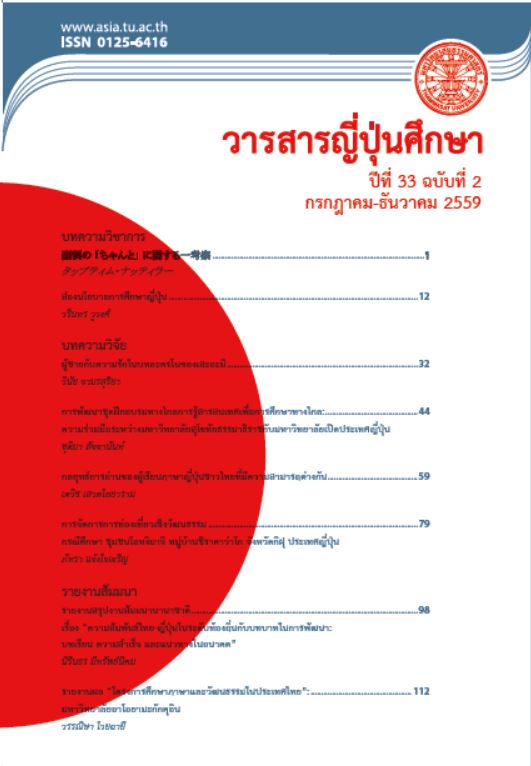กลยุทธ์การอ่านของผู้เรียนภาษาญี่ปุ่นชาวไทยที่มีความสามารถต่างกัน
บทคัดย่อ
This study investigates the use of top-down and bottom-up reading strategies by Thai learners with different levels of Japanese proficiency. One hundred twenty informants were put into three groups of forty (advanced, upper-intermediate and intermediate) according to their Japanese Language Proficiency Test (JLPT) scores. A three-point Likert scale (seldom use, sometimes use, often use) was developed to include fourteen top-down strategies and fourteen bottom-up strategies before it was delivered to these learners to complete. The data were then analysed by Decision Tree (SPSS version 18). Analysis shows that the learners tried to use both top-down and bottom-up strategies. However, the advanced Japanese learners were found to use a few top-down strategies to interpret reading details (e.g., connecting the information from the front parts to the following parts to comprehend the text, trying to capture the main idea of the text, etc.). They also seldom used a dictionary to find the meaning of vocabulary because they believed that to understand the specific details of the text, they need to comprehend its overall content first. On the other hand, to comprehend the overall text, the upper-intermediate and intermediate learners tended to use more bottom-up strategies (e.g., using a dictionary to find the meaning, finding a subject and a predicate in every sentence, etc.). They held that if they failed to understand the vocabulary meaning and the structure of that sentence (subject and predicate), it will affect their reading comprehension.


